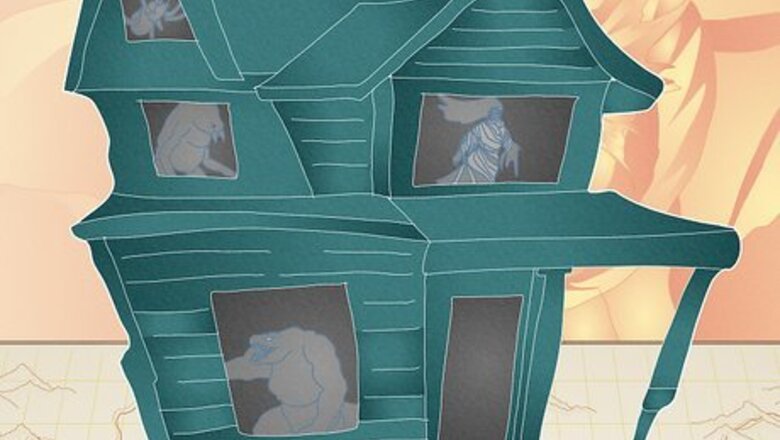
views
Haunted House

Create a haunted house full of ghosts, ghouls, or demons. Haunted houses make for fantastic one-shots because the adventure takes place in a contained area (so there’s no room for players to wander, thus helping you keep the one-shot under 4 to 6 hours). Seal the PCs (player characters) inside a house with several rooms to explore and fill them with puzzles, traps, and spooky monsters. Check out the official D&D rulebook for cool monsters to use inside the house. Outside of the typical ghosts, you might also use allips, wights, banshees, or animated armor. If you’re running a high-level one-shot, have the source of all the spooky activity be a zombie beholder, dracolich, or demon. Worried your players might just up and leave the haunted house? Have the doors magically (and eerily) lock, or make them mysteriously disappear altogether! Then, the PCs must discover what malevolent entity is keeping them trapped.
Heist

Set players up with a high-stakes heist and valuables to steal. Who doesn’t love a good heist? Give the PCs a target to rob (and a reason to do it). Maybe they need to steal the treasure from a local temple to try and resurrect a fallen character—or rob the local lord’s treasury because he’s been greedily taxing the townsfolk and hoarding their money. Then, let them come up with creative (and chaotic) ways to pull off the heist! Alternatively, turn the one shot into a prison break. Start the PCs in a high-security dungeon or prison with limited gear, and challenge them to break out—whether they do it with stealth, guile, or force.
Villainous Mischief
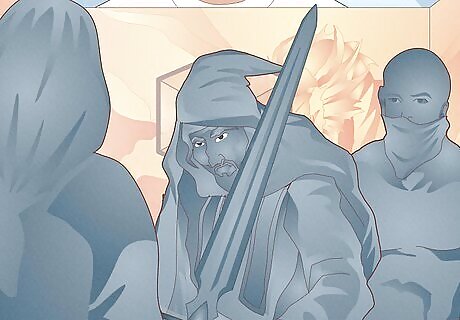
Let your players get into trouble as the villains they normally fight. Are your players used to being the heroes of the D&D campaign? Try turning the narrative upside down! Give them villainous characters to play, or let them create their own evil-aligned PCs. Then, design an adventure where they must work to defeat the meddlesome heroes and cause some havoc among the townsfolk. Alternatively, have your players take on the role of minions who work for a villain. For example, they might work for a key villain in your regular campaign (if you have one), or they might work for a powerful creature, like a red dragon.
Escape the Plane
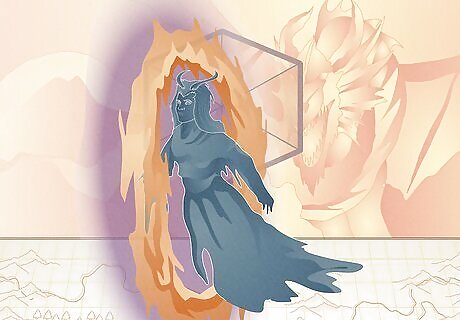
How will your players react when they get dragged to a new world? Trap the PCs in an unfamiliar plane so they can explore the area and interact with new creatures. In D&D, most adventures take place in a Prime Material plane setting, like Faerûn or Eberron. However, there’s a multiverse of different planes in D&D—so send them to a new plane for a few hours and have them search for a way home! Try planes like: The Feywild. The Feywild is a gigantic magical forest filled with vibrant plants and chaotic fey creatures like fairies, dryads, and satyrs—the perfect place for a wild adventure. Domains of Dread. Domains of Dread are smaller demiplanes connected to the Shadowfell, each ruled by a powerful dark lord. Try trapping your PCs there and challenging them to escape by battling the dark lord in charge! The Nine Hells. In D&D, the Nine Hells are the realm of the devils (not to be confused with the Abyss, where demons make their home). Trap the PCs on one of the 9 layers of the Hells and have them battle a horde of devils to escape.
Lost Memory

Challenge the PCs to figure out what happened without any memories. This one-shot premise has a ton of flexibility because you could go almost anywhere with it! Have the PCs start in a place of your choosing with absolutely no memory of getting there. From there, let them explore, put together the pieces of what happened, and make a plan to deal with the enemy that caused their memory loss. For example, perhaps a capricious archfey trapped them in its realm with no memories as a joke to see how they’d react, and the party must face off against the archfey (or persuade it to free them). On the other hand, perhaps a powerful wizard modified the PC’s memories so he could rob them or take over a city without their interference—and they must bring him to justice.
Cursed Characters

Put a curse on the PCs and challenge them to lift it. Start the adventure by having the PCs wake up under the influence of a curse. Choose the curse’s effects, and decide how to amplify them as the curse progresses and the adventure ramps up to its conclusion. Then, have the PCs figure out who put the curse on them and how they can lift it before it’s too late! For example, an old enemy of the party could pay a mercenary wizard to curse them with a magical disease or a negative status effect like exhaustion. On the other hand, a powerful and chaotic enemy spellcaster might target the PCs with a wild magic surge, causing them to keep turning into random creatures until the curse is lifted.
Adventure on the High Seas
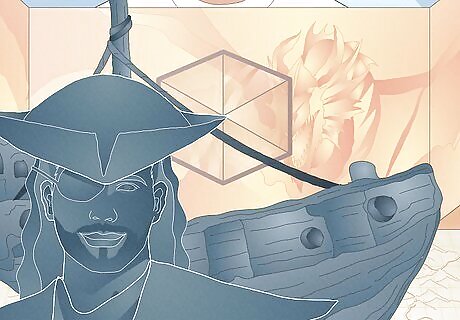
Play as pirates, or explore underwater and fight mythical creatures. Put your players in the shoes of swashbuckling pirates exploring the oceans in a ship. Then, create a foe for them to vanquish over the course of the one-shot—whether it’s a ship full of rival pirates or a ferocious underwater entity, like a kraken. Better yet, have them battle both! For example, you might have the players spend most of the one-shot trying to compete against rival pirates and see who can find the treasure faster. Then, introduce a twist at the end of the one-shot! As soon as they find the treasure, the kraken guarding it attacks—and both pirate crews must team up to defeat it.
Gladiator Arena

Design a combat-heavy one-shot, or allow player-versus-player fights. Begin the one-shot with the PCs having just joined the arena—either as a team or as solo combatants—so they have to work their way up from the bottom. Then, pit them against different opponents and challenge them to become the most powerful fighters in the arena, whether they’re doing it in search of powerful equipment, riches, or glory. If your players really like combat in D&D (as opposed to stealth or roleplaying interactions), a gladiator arena can be a super fun combat-heavy adventure for them.
Day at the Festival
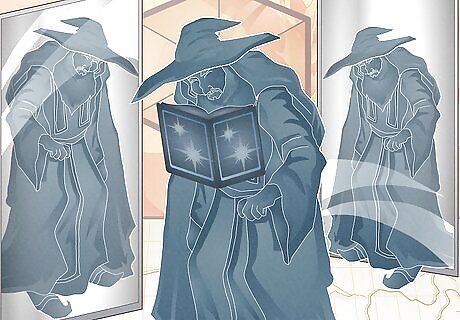
Have the PCs celebrate a special holiday and fight enemies all at once. Festivals are super fun because they’re filled with mini-games (like archery challenges, pie-eating contests, or dancing competitions), prizes to win, and fun social interactions with NPCs (non-player characters). Create a festival for your PCs to explore, complete with a series of activities they can try—and then introduce a complication halfway through. For example: The PCs enter a house of mirrors, only to realize the mirrors are enchanted and can create evil duplicates of them. They must fight a rival party that looks exactly like them! Someone poisoned the ale for the ale-drinking contest. The PCs must hunt down the perpetrator and recover the antidote to save the festival. The festival’s fortune-teller keeps predicting dangerous events that end up coming true for all of her clients. The PCs must stop her—and prevent the next prediction from coming true.
Murder Mystery
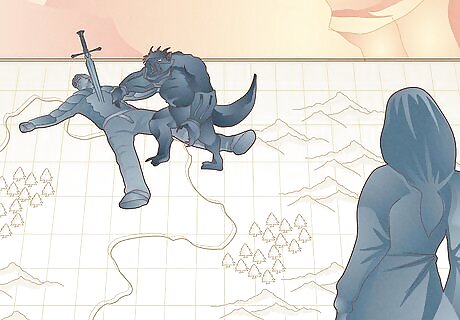
Turn your players into crime-fighting detectives. Murder mysteries are classic puzzles for a reason—they’re tons of fun and intriguing for players. Have the PCs witness a murder—for example, a patron at a tavern mysteriously dies of poisoning, or a guest is found dead in a hallway at a nobleman’s fancy ball. Then, have them look for clues and try to find the murderer before the killer gets away—or kills again. Want to add a twist to the adventure? Have the local authorities blame the PCs for the murder! Not only do they have to prove their innocence, but they must also evade the guards while looking for clues.
Epic-Level Enemies
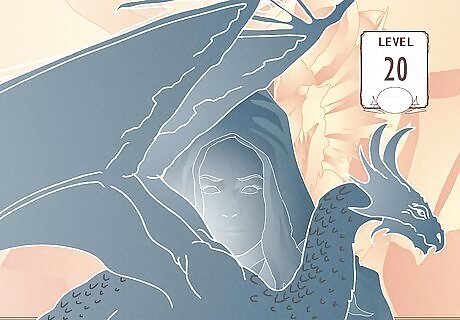
Let your players experience the thrill of playing as epic-level characters. Level 20 is the absolute highest level a PC can reach in D&D 5e, but not many campaigns get there—after all, it can take a long time to reach level 20! Save your players the time and set up an epic-level one-shot, complete with a legendary enemy their level 20 PCs must fight (and beat) to complete the adventure. Use enemies like: Strahd von Zarovich. Granted, the vampire ruler of Barovia isn’t necessarily an epic-level enemy—but he is iconic! Try leveling him up until he’s powerful enough to stand up to level 20 characters. Tiamat. The goddess of evil chromatic dragons, Tiamat, is one of the most powerful creatures in the D&D universe, period. At a challenge rating of 30, she’s enough to make even epic-level PCs nervous! Asmodeus. The ruler of the Nine Hells, Asmodeus, eventually managed to elevate himself from an Archdevil to a deity, making him an extremely challenging and legendary foe. Szass Tam. Szass Tam is the ruler of Thay, a country known for its magical prowess. As a lich, Szass Tam is a sinister undead creature capable of astronomically powerful magic.
NPC Adventures
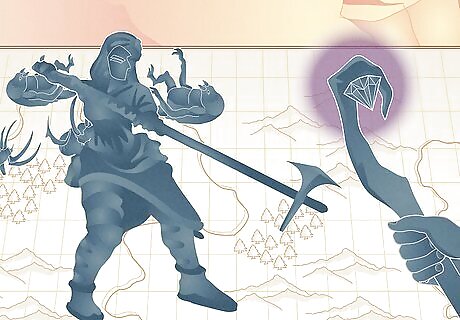
Have players use pre-established NPCs from an existing campaign. This can be super fun for players if they’re all also part of a longer home campaign you run. First, come up with a few NPCs from that campaign that your PCs are fond of. Then, let your players choose from that list which NPC they want to play, and create an adventure with players in the role of their campaign NPCs. For example, set the one-shot in whichever city the players’ main PCs from the campaign live. Then, have something happen while they’re out of town—maybe an enemy comes to town, or a curse gets placed on the whole city. From there, it’s up to the NPCs to deal with the threat while the heroes are out of town! When you’re making a list of usable NPCs, be sure you come up with a class (and level) for them if they don’t already have one. For example, the bartender your players love could be a retired fighter and dust off her longsword when a new treat arises.
Based on Another Story
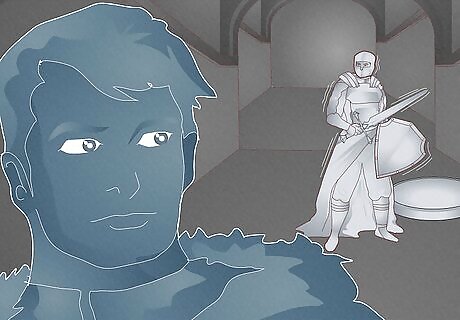
Create a one-shot based on a book, game, or movie you love. Still feel like you don’t have any ideas? Then look at your favorite stories for inspiration as you build your one-shot. Players might be even more enthusiastic if they recognize the premise of the one-shot—but even if they don’t, using another story as inspiration can give you a helpful blueprint as you design the adventure. Get creative, and use any story you like! For example, you could use: Night at the Museum. A wizard obsessed with ancient magical artifacts hires the PCs to guard his museum for the night, only for the PCs to discover that one of his artifacts makes the exhibits come to life. How the Grinch Stole Christmas. A cantankerous old entity living on a mountain (perhaps a dragon or a lich) gets annoyed with the townsfolk celebrating Midwinter below—and starts kidnapping people. Assassin’s Creed. The PCs are trained assassins who must work together to eliminate high-stakes targets, and they must take out their latest target—a powerful Duke—before he attacks a neighboring settlement.
Pre-Written One Shot

Plenty of official and 3rd-party content is designed for one-shot games. If you’re short on time, there are a ton of places to find pre-written adventures! Wizards of the Coast has plenty of anthology adventure books, with each chapter being its own adventure—or you could explore an online platform like Dungeon Masters Guild, which features work from 3rd party and independent creatures. Popular D&D books include: Journeys Through the Radiant Citadel. This is a compilation of adventures set in the Radiant Citadel, a city on the Ethereal plane. Ghosts of Saltmarsh. This book includes a series of nautical adventures set in a seaside town called Saltmarsh. Candlekeep Mysteries. This book features a series of adventures that revolve around the library fortress of Candlekeep, which is filled with tomes and mysterious artifacts.

















Comments
0 comment